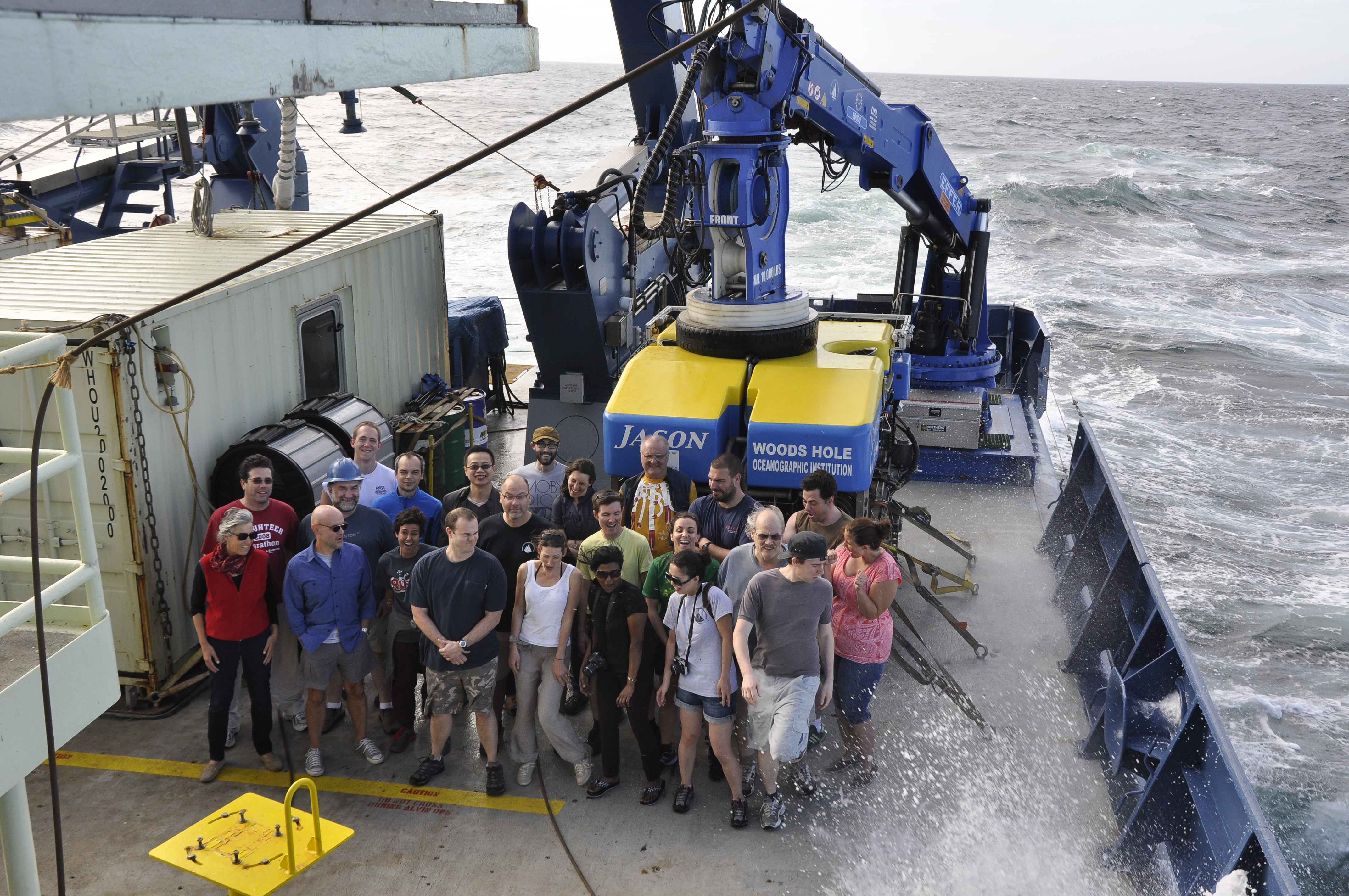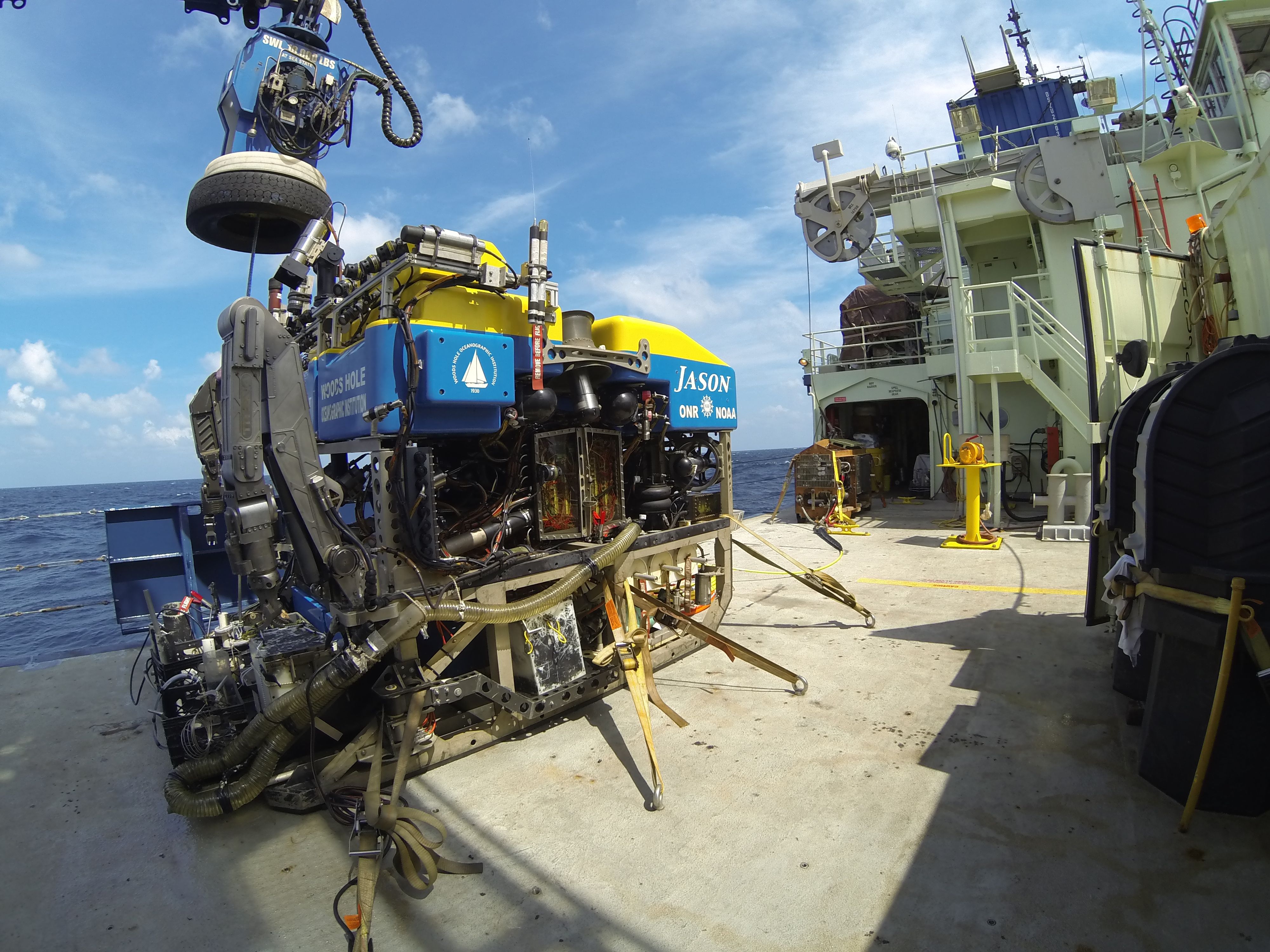Structure and Function of Chemosynthetic Microbial Biofilms - Understanding the Foundation of Deep-Sea Hydrothermal Vent Ecosystems

Microbial chemosynthesis represents the basis for primary production at deep-sea hydrothermal vents. The flux of energy from the geothermal source via emitted reduced chemical species is mediated by microbial transformations, which result in the production of ATP and organic carbon as a form of biochemical energy. Chemosynthesis may be coupled to both aerobic and anaerobic respiration. Aerobic chemosynthesis depends on oxygen, which ultimately originates from photosynthetic processes occurring in the photic zone. Anaerobic chemosynthesis depends on terminal electron acceptors other than oxygen (e.g., S0, SO42-, CO2, Fe3+, NO3-, etc.), and therefore it is independent from photosynthetic processes. In my laboratory we are currently investigating both processes.
Chemosynthetic microorganisms at deep-sea hydrothermal vents establish biofilms on solid substrates and may play a critical role in “conditioning” the environment for further colonization by other microorganisms and metazoans. Hence, they mediate the initial processes in the establishment of the vent ecosystem. We believe that the ability of microorganisms to attach to substrates, to interact among themselves and with others, to use multiple energy sources and electron donors/acceptors, and to detoxify the environment are critical processes shaping the development of deep-sea vent ecosystems. However, these processes and the mechanisms underlying them have been scarcely investigated, in particular in the natural environment. With the objective of initiating an investigation of post-eruptive microbial biofilm formation at deep-sea vents, we deployed and recovered newly designed experimental microbial colonizers at active diffuse flow vents on the EPR at 9°N. Biofilms rapidly developed on the colonizers in a matter of few days. Read our scientific papers on chemosynthetic microbial biofilms at deep-sea hydrothermal vents (doi: https://doi.org/10.1186/s40793-025-00738-x; doi.org/10.1016/j.dsr2.2015.07.020; dx.doi.org/10.1038/ismej.2014.214).
The use of experimental microcolonizers was dictated by the need to obtain sufficient biomass for transcript analysis. In order to identify the active microbial colonists, we conducted a preliminary comparative characterization, based on 16S rRNA transcript analyses, of the microbial biofilms growing on the experimental colonizers deployed at 9°N on the EPR and of native basalt located in close proximity to the colonizers. Furthermore, we extended the clone library work with pyrotag sequencing of the 16S rRNA transcripts, and we carried out comparative metatranscriptomic analyses (i.e., direct deep-sequencing of cDNA derived from RNA extracted from the biofilms) of two representative biofilm communities.








